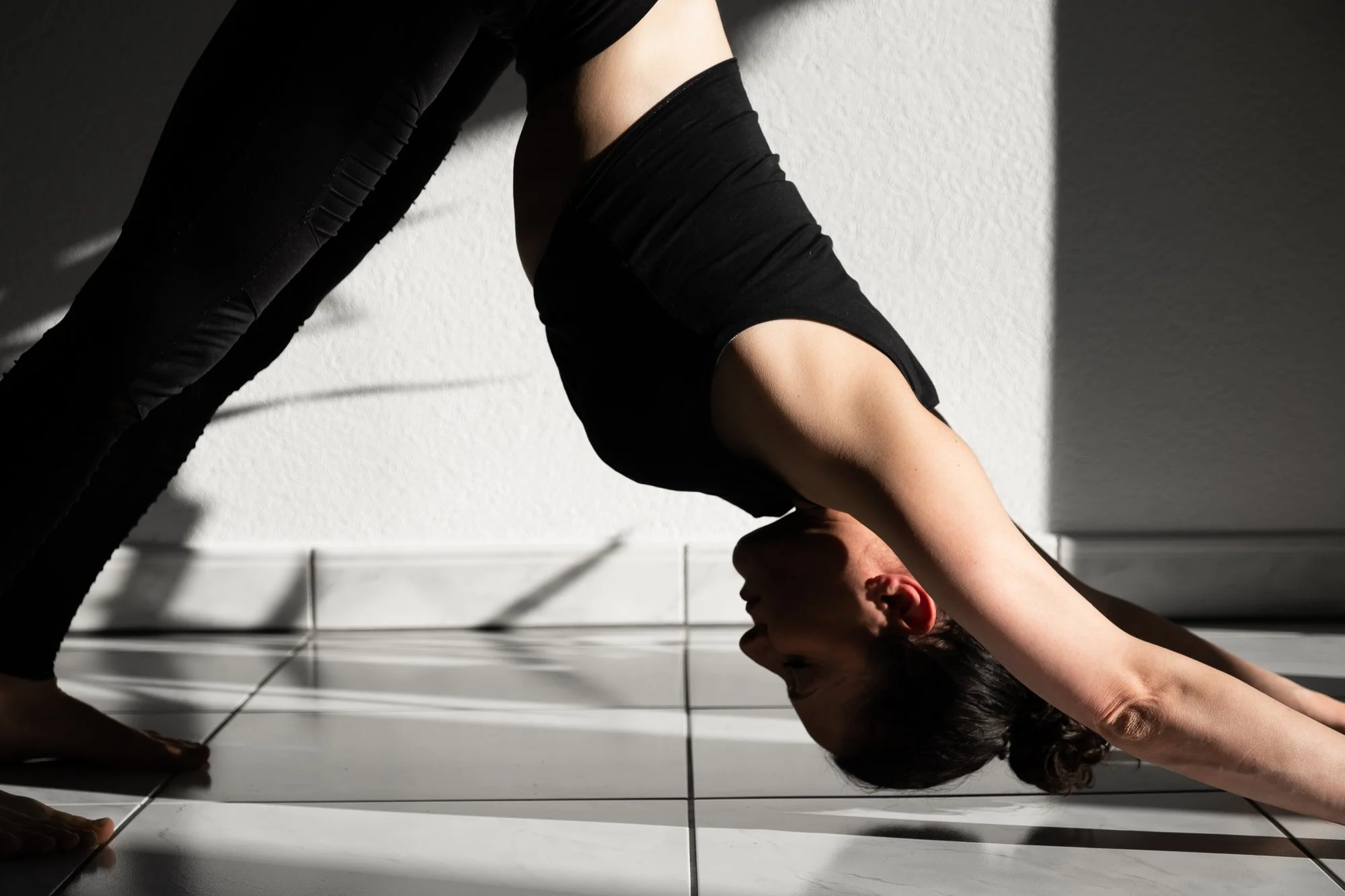Adho Mukha Svanasana
In this ASANA LAB Series you will read some more information about the asanas, their benefits, how to practice them correctly and what to watch out for.
We start with one of the most popular poses, that you will probably find in every Hatha, Vinyasa or Asthanga class. Nowadays, also in Fitness-, Gym-, or Pilates classes, due to it’s great benefits.
We’re talking about Downward Facing Dog or Adho Mukha Svanasana in Sanskrit.
In Sanskrit, adho means “down”, mukha means “face”, svana means ”dog” and asana means ”pose”. In this pose, the body looks like that of a dog (Svana), relaxing and stretching while burrowing its face (Mukha) downwards (Adho) towards its shoulders. Its multi-purpose nature makes it great for serving as a starting, transitional, resting and strengthening pose.
I remember one of my first teachers saying during class „rest or take a break in downdog“. I thought: Is this a joke? 😅 My arms were shaking, my shoulders hurt and it felt like all the blood is already in my head.
If you ever did one, you might know this feeling, as Downward facing dog is actually a deceptively challenging posture that requires lots of strength. And because it involves using the entire body, you can feel its effects from head to toe.
Honestly I didn‘t like it in the beginning and it really took some time and practice to get used to it and like/love it.
Downward dog, that we use during the practice both, as a transitional and resting position, stretches and strengthens almost every muscle in the body while providing the benefits of inversions as well as stress-relieving benefits. And with practice, Downward Dog can eventually become a rest pose to help you reconnect with your breath.
Benefits
• Elongates the spine
• Strengthens the whole body – upper body, arms, shoulders, abdomen and legs.
• Strengthens hands, wrists, and fingers
• Opens up the back body, spine, back of the legs, ankles, calves, hamstrings
• Improves and stimulates circulation
• Relieves tension and stress
How to practice Downward Facing Dog
(Step by step description inspired by Ekhart Yoga)
Start in table top position, on all fours, with your hips above your knees and shoulders above your wrists.
Bring your hands slightly forwards of your shoulders, with your index finger pointing forward, spread your fingers.
Think about creating a suction cup in the middle of your palm by pressing through the outer edges of the palm, the base of the fingers and the fingertips. This is called Hasta Bandha.
Create a spiral action in your arms by rolling your upper arms away from you (external rotation) and your forearms spiralling inwards. The spiral action of the arms can be tricky at first so try it while you are sitting on your heels. Read Marlene Henny’s advice on arm rotation in Downward Dog.
Tuck your toes under, and on an exhalation, engage your lower belly drawing the navel back to the spine. Press through your hands and lift your hips back and up. You’re now in kind of an upside-down V pose.
Keep your knees bent at first as you find length in your spine. It’s actually more important to keep length in the spine than straight legs. So if you find you are rounding in your back or you are hunching your shoulders it’s fine to keep the knees bent as much as you need to so you can enjoy the stretch in your back.
Slide your shoulder blades down along the spine, collar bones spread. The base of the neck relaxed.
Maintaining length in the spine, ‘walk your dog’ by alternately bending and straightening your legs. Eventually bringing both heels towards the floor. They do not have to touch the floor but reach for the floor.
Stay for a couple of breaths.
To come out of the pose, bring your knees back down to the floor and come into Child’s pose or transition into a lunge by stepping one foot towards your hands.
Watch out for
Make sure the knuckle of the first finger is firmly pressing down, to protect your wrists.
Shift your weight back into the hips.
If you are hyper-mobile, avoid locking your elbows by keeping a micro-bend in your arms.
Check if you are hunching up your shoulders – try nodding and shaking your head to keep the base of your neck relaxed.

